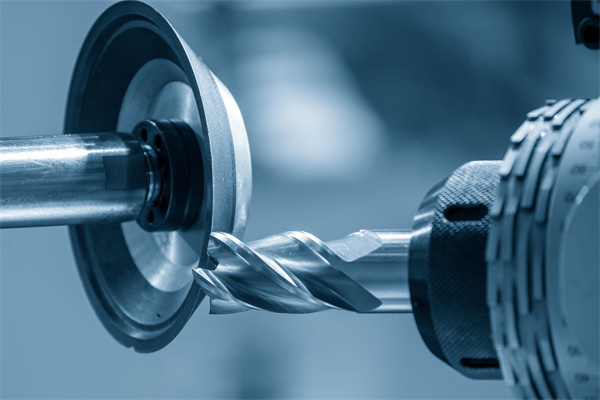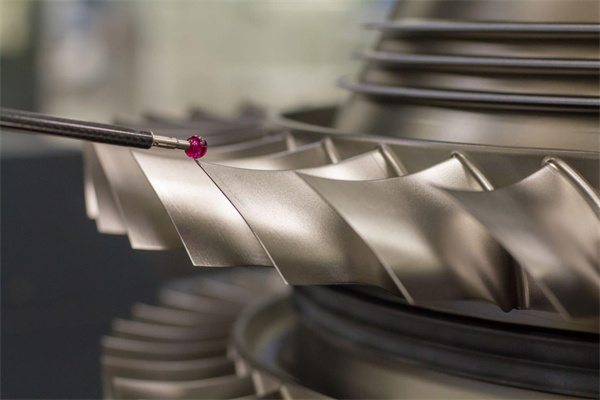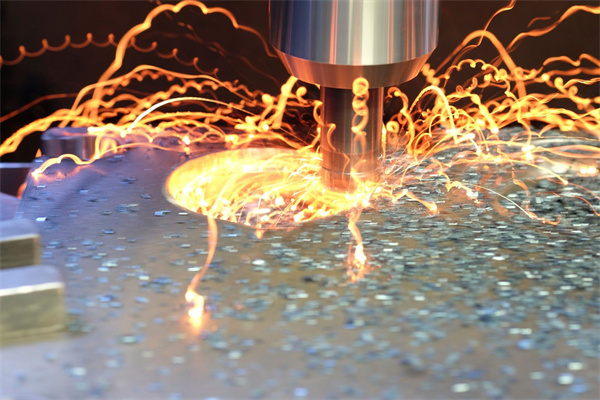[lwptoc]
Understand the limitations of CNC machining
As the manufacturing world continues to evolve, CNC machining has become a popular choice for many companies. CNC machining offers excellent accuracy and repeatability in various materials and applications, whether for prototyping, small-batch production, or large-scale mass production. However, there are still some limitations to what CNC machining can do. In this blog post, we will explore these limitations and how to design parts for CNC machining that can help you maximize your parts’ performance while avoiding obstacles in production.
The main limitation of CNC machining is the difficulty of producing complex shapes with tight tolerances. For example, if you need a highly intricate shape, such as an internal cavity with very tight tolerance requirements, traditional 3-axis machining may not be up to the task. Likewise, certain materials may not be suitable for CNC machining due to their properties or because they do not allow precise control of the cutting process.
Another limitation of CNC machining is its limited size capabilities; machines generally have a maximum part size that they can accommodate. This means that if you need a larger part than what the machine can handle, it will have to be broken down into multiple parts, which can then be assembled later. This also can increase production costs as more time will be required for assembly and additional costs such as welding or fastening hardware.
Finally, another issue that often comes up when dealing with CNC machined parts is surface finish quality; depending on the material used and the tooling design, this may vary from part to part, even when using the same machine settings. To achieve a good surface finish, it is best to use tools made specifically for your material type and work with specific depths of cut wherever possible instead of taking wide cuts across multiple passes, which could cause vibration and toolpath instability.
To make sure your parts come out looking perfect every time, here are some tips on how to design parts for CNC Machining:
1) Design features by available cutting tools
– Make sure that all features designed are achievable by available cutting tools based on desired tolerances such as corner radius values, thread sizes, etc.; if any feature exceeds these tolerances, then redesigning them may be necessary
2) Minimize the depth of cuts
– Try reducing the depth of cuts where possible, which improves surface finish quality but also reduces production times and tool wear
3) Use additive manufacturing methods
– If 2D/3D shapes are too complicated or expensive to produce via traditional subtractive methods such as milling/turning, then consider using an additive manufacturing method like 3D printing or Stereolithography (SLA) which could deliver better results in less time
4) Consider secondary operations
– Many times, finishing operations such as grinding or polishing must be done after machining due to limitations in surface finish quality; have these plans ready before starting production so no time is wasted
5) Account for heat expansion
– Heat generated during cutting causes materials to expand at different rates, thus leading to incorrect dimensions; plan by factoring thermal expansion into your design
Considering all these factors when designing parts for CNC Machining, you can ensure that your part performance meets expectations while minimizing potential issues throughout production. The key takeaway from this blog post is that understanding the limitations posed by CNC Machining is essential to getting optimal results from your parts every time!
Design your parts using CAD software.
Using computer-aided design (CAD) software to design your parts is a great way to ensure that your part is created to the exact specifications. CAD software allows you to create 3D models of objects and components, which can then be used for CNC machining or other manufacturing processes. This post will outline the basics of CAD software for designing parts for CNC machining and some tips for creating high-quality parts.
When you’re ready to begin designing, there are a few things you should keep in mind. First, consider the materials you plan to use and the finished product size. The type of material and size will determine the strength requirements needed for your part, so it’s important to start with these considerations in mind. After deciding on a material and size, use CAD software to create a virtual “blueprint” or 3D model of your part.
Once you have created your model, it’s time to refine its shape and features by adding curves, holes, grooves, etc. You can add fine details such as texturing or color gradients if desired. Once your design is finalized in CAD software, it’s ready for CNC machining!
The biggest benefit of creating designs with CAD software is that all areas of the part can be accurately measured before machining begins—no more wasting time reworking parts due to incorrect measurements! Additionally, if any changes need to be made in the future, they can be done quickly without having to go back and redo measurements from scratch. This saves both time and money!
To ensure that you get high-quality parts from CNC machining, your designs must be accurate before being sent out for production. To do this, ensure all dimensions are correct; check that all curves and edges match up properly; double-check surfaces for flatness; look at fillets or draft angles; verify chamfers; check hole diameters; inspect slot widths; review thread sizes; confirm slot depths and much more! These steps will help ensure that when your part is returned from CNC machining, it meets all expectations and performs exactly as designed.
Designing a component or object with CAD software makes preparing it for CNC machining easy! By taking these steps before sending out a design, you can rest assured knowing that everything was properly measured before being cut—saving time and money in potential rework costs down the line! So if you need help ensuring your component meets specifications when sent out for production, consider using CAD software today!
Test and iterate on your designs until they are perfect
Designing and manufacturing parts for CNC machining can be complex and require precision to ensure the finished product meets specifications. To help ensure that your parts are created to the highest standards, it is important to test and iterate on your designs until they are perfect. Here, we’ll discuss how to go about testing and iterating on your design for CNC machining to make sure you get the best results.
The first step in designing for CNC machining is creating a 3D model of the part or assembly being made. This model will serve as a blueprint the machine will follow when cutting out the actual parts. Once this model is finalized, you should run simulations of the machining process using computer software such as CAD programs or CAM software. This will allow you to visualize how the part will be cut and assembled so that any flaws or errors can be identified before production begins.
Once these tests have been run, it’s time to begin testing with natural materials. For this, you’ll need access to an actual CNC machine which you can use to create sample parts from various materials such as aluminum, steel, copper, brass, and more. By testing with natural materials in an actual machine, you’ll be able to identify any issues before moving forward into production – saving time and money in the long run.
In addition to running tests on natural materials in a CNC machine, it’s also important to keep an eye out for potential problems during manufacturing itself. Issues such as tool wear or chip buildup can cause discrepancies between what was expected from your model versus what ended up being produced by the machine itself. So you must stop and investigate further when something seems off during production. Doing this regularly throughout production runs lets you quickly catch any errors before they become bigger problems.
Finally, once your parts have been produced, it’s always a good idea to run quality control tests on them as well – just one final way of ensuring everything went according to plan during production. Quality control tests can range from simply inspecting each piece visually for defects to more rigorous measurements using specialized equipment like calipers or surface finish gages if needed. By running these tests at various stages of production (from start to finish), you can guarantee that your parts meet all specifications set forth by yourself or your clients with greater accuracy than ever before!
By taking steps such as creating 3D models for simulation purposes, testing with natural materials in an actual CNC machine, keeping track of potential issues during manufacturing runs, and performing quality control checks on finished products – designers and manufacturers alike can make sure their CNC machines produce only top-notch results over time! Testing and iterating on designs until they are perfect helps guarantee repeatable success every time – no matter how complex or intricate the job may be!
Order prototypes to ensure that your design is manufacturable
When designing parts for CNC machining, the importance of ordering prototypes cannot be overstated. Prototyping is essential in ensuring that your design is manufacturable and will yield the desired results. By ordering a prototype, you can test your design before committing to full-scale manufacturing, thus saving time and money in the long run.
Prototyping ensures that your part design meets all your requirements and specifications. Through prototyping, you can easily identify any potential issues with the design, such as incorrect dimensions or tolerances, which could lead to costly delays in production. By testing your design beforehand, you can ensure that it will meet all your specific needs and requirements before starting mass production.
Aside from identifying potential flaws and issues with the design before entering into production, prototyping also serves another benefit: it provides an opportunity for customer feedback on the product design itself. By soliciting feedback from customers familiar with CNC machining processes, you can make improvements to the design based on their input and suggestions. This helps to ensure that when production begins, you’ll have a fully tailored product to meet customer demands or expectations.
Furthermore, ordering prototypes help you save time and money by preventing unnecessary complications during manufacturing caused by unforeseen factors or errors with the original part designs. It’s much easier to fix any issues at this stage than after large-scale production has already begun; having a prototype gives you a chance to look at every aspect of the part, from function to fitment, before releasing it into mass production.
Investing in prototyping is an invaluable step in designing parts for CNC machining; it helps ensure that your finished product will be exactly as intended while avoiding any avoidable problems during the manufacturing process. At minimum cost and effort compared to larger-scale production runs, prototypes provide enormous benefits by helping identify potential issues and providing feedback on customer preferences or expectations so that when large-scale production does commence, everything proceeds smoothly without any major hiccups throughout the entire process.
Make any necessary changes to your design based on the feedback you receive
When designing parts for CNC machining, it’s important to consider feedback and make any necessary changes so that the part will perform as desired. It cannot belt to know what adjustments are necessary when designing a part. Still, with the right feedback and design experience, you can ensure that your part will function properly in its intended environment.
Several steps are involved in making necessary changes to a design based on feedback. The first step is to assess the feedback you receive accurately. It would be best to consider what is being said, who is giving the feedback, and why they are giving it. Is the feedback coming from an experienced engineer who has previously worked with this type of part? Or is it coming from someone who has an opinion? Considering these factors will help you determine which changes should be made if any.
The next step is to start making adjustments to your design. This could involve updating certain measurements or making minor tweaks to certain components. Sometimes, you may even have to go back and start from scratch if the initial design needs major revisions or updates. It’s important to remember that even small changes can greatly impact how well the part works in its intended environment, so accuracy is essential at this process stage.
Once your new design is ready, you must test it and ensure it meets all its performance requirements. This could involve running tests on physical models or computer simulations to see how well the part performs under different conditions. Testing allows you to identify potential problems before putting your product into production so that any issues can be addressed before mass production begins.
Finally, once all of these steps have been completed, and any necessary changes have been made based on feedback, you can begin manufacturing your parts for CNC machining with confidence that they will work as expected in their intended environment. The key takeaway is that incorporating feedback into your designs isn’t just good practice—it’s essential if you want your parts to perform as desired when used by customers or clients.
Produce large quantities of parts for mass production.
Producing large quantities of parts for mass production can be a daunting task, but with the use of CNC machining, it can become much easier. CNC (computer numerical control) machining is an automated process that uses computer-controlled cutting tools to shape and create parts from various materials. This technology has revolutionized the manufacturing industry and can help businesses produce large volumes of parts quickly and efficiently.
When it comes to designing parts for CNC machining, there are certain things you need to consider to get the most out of your production run. The first thing to consider is the material you’ll be using to make your part; certain materials are better suited for certain machining operations than others. It’s important to know what type of metal or plastic will best suit your project before getting started. Once you’ve chosen a suitable material, you’ll need to determine which CNC machine will work best for your application; several different types are available depending on your needs.
Once you have chosen the appropriate machine and material, it’s time to begin designing your part or product. CAD/CAM software is essential when creating designs for CNC machining as it allows for precise control over every aspect of the design process and provides detailed instructions on how the machine should perform each operation. When designing parts, it’s important to ensure that all features are optimized for maximum strength and efficiency; this includes selecting tolerances and defining surface finishes on specific features where applicable. Additionally, any features that require additional support should also be considered during the design phase to prevent potential failures during production runs.
Finally, before starting up a CNC machine, it’s important to check all safety protocols, such as proper eye protection and other necessary precautions, to ensure a safe working environment. Maintaining these safety measures will help keep everyone safe while allowing you to maximize efficiency when producing large quantities of parts for mass production with CNC machines. With careful planning and attention to detail, CNC machining can provide businesses with an efficient solution for their production requirements while minimizing waste and cost.











